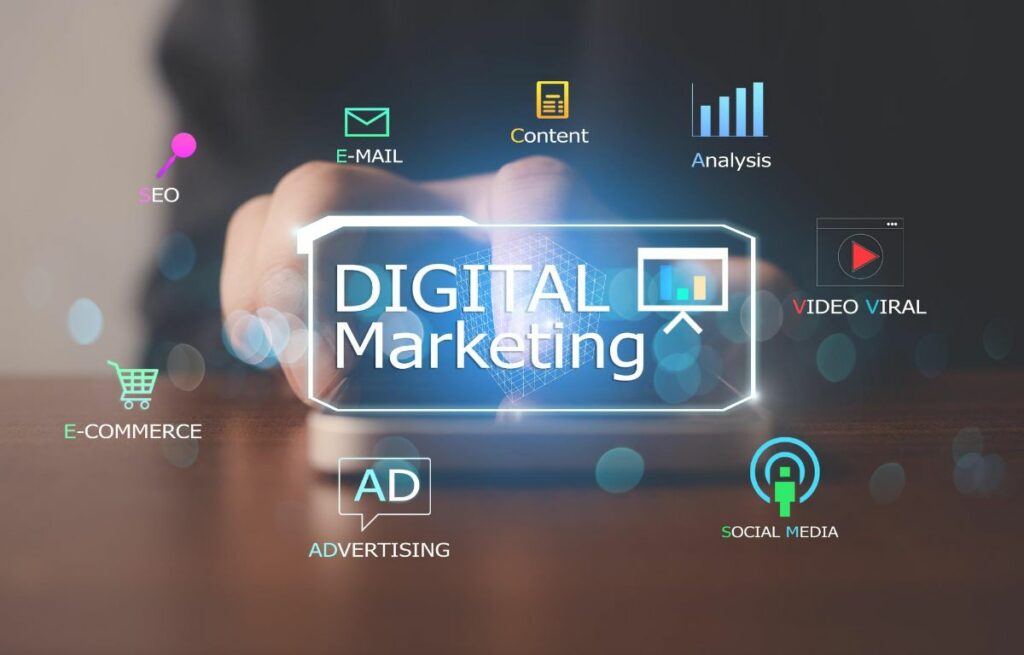Table of Contents
ToggleIn today’s interconnected world, where individuals are bombarded with an excessive amount of information and options, it can become challenging for businesses to differentiate themselves. Digital Marketing has proven to be the most effective way to reach and interact with customers. Personalization in Digital Marketing is a powerful strategy that can transform customer engagement. This blog will explore the advantages, strategies, and best practices of personalizing marketing campaigns to create highly targeted and engaging marketing experiences that appeal to today’s discerning consumers and improve customer experiences.
What is personalization in Digital Marketing?
Personalization has become one of the most effective ways to get your customers’ attention and keep them coming back. By customizing experiences and content based on your customer’s preferences, you can build stronger relationships, increase conversions, and create lasting connections with your target audience.
- Get to know your audience– Take the time to understand your target audience, their interests, and how they interact with your products and services. Use data analytics and insights to get a better understanding of what your target audience wants and needs.
- Create Attractive Content– Create engaging and relevant content that resonates with your audience’s needs and wants. Customize your messaging, visuals, and narrative to fit your target audience’s interests, wants, and pain points.
- Categorize your audience- Split your audience into different groups based on what they have in common. This way, you can tailor your messages and experiences to each group, boosting engagement and conversions.
- Data and Technology– Use data and technology to gather, analyze, and understand customer data. Use CRM (customer relationship management) tools, marketing automation, and machine learning to personalize your content, recommendations, and offers.
Types of Personalization in Digital Marketing
- Content personalization– Creating personalized content based on what people like, what they’re interested in, and what they’ve done in the past could be something like personalized emails, website posts, blog posts, or product recommendations.
- Behavioral personalization– The utilization of customer data to create tailored experiences is known as behavioral personalization. Examples of this type of personalization include the retargeting of advertisements based on a customer’s past browsing history or the use of cart abandonment emails to engage customers again.
- Product personalization- The goal of product personalization is to provide customers with the opportunity to tailor products or services to their individual preferences. This could include providing tailored recommendations based on prior purchases or user decisions.
Implementing Personalization in Digital Marketing
- Automation and artificial intelligence can be utilized to create content that is tailored to the individual needs and preferences of users. This could involve providing tailored product suggestions or custom pricing based on customer behavior.
- If you want to make your customers’ experiences more personalized, you need to collect and analyze lots of data about them. You can use sources like website analytics, surveys, purchase histories, and social media to get a better understanding of them.
- Ensure data privacy compliance and ethical practices when personalization is implemented. Protect your customers’ privacy, obtain consent, and focus on data security to create trust and protect your brand’s reputation.
- Personalization is a continuous process. Keep testing different personalization tactics, content changes, and offers to see what works best for your audience. Analyze your data regularly and get feedback to make your personalization efforts better.
Best practices for personalization
Digital Marketing is constantly changing, and it is one of the most important things you can do to get your customers’ attention and retain them. Personalization is all about creating experiences and content that are tailored to your customers’ needs and wants. This way, you can make meaningful connections with your customers and get them engaged, converted, and advocating for your brand. To get the most out of personalization, you need to follow the below best practices:
- Take the time to get to know your target audience– what they look like, what they like, what they do, what they’re looking for, and what their pain points are. Use this information to create comprehensive buyer personas to inform your personalization efforts.
- Keep customers in the loop- Be open and honest about how your personalization processes work and explain how customers can benefit from them. Make sure customers know how their information is being used.
- Protect customers’ data– Data privacy and security are at the top of the list for building and maintaining trust.
- Test and optimize- Keep testing different personalization ideas, content changes, and user experiences on a regular basis. Check performance metrics and A/B tests to figure out what works best for your audience and make sure your personalization efforts are as effective as possible.
Conclusion
Personalization in Digital Marketing continues to be one of the fastest-growing and most dynamic areas in Digital Marketing today. By staying up-to-date, learning from best practices, and staying ahead of the curve, businesses can deliver exceptional experiences that connect with customers, build brand loyalty, and drive long-term business growth in today’s ever-evolving digital environment.
Spoclearn helps you elevate your skills by giving you in-depth knowledge of your niche. Do you want to take your career to the next level? Enroll in our courses now.
